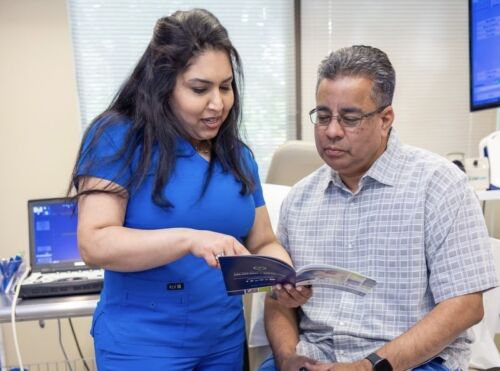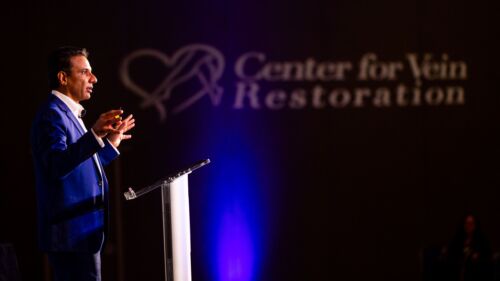In this blog, we will explore the most common myths about
varicose veins and provide the accurate information you need to understand
better and deal with this unsightly, often painful, and highly treatable form
of vein disease.
Varicose veins are a common yet widely misunderstood condition
that affects an estimated 20 percent of all Americans, according to the National
Institutes of Health. Despite the wealth of knowledge about venous
insufficiency (the root cause of varicose veins), myths and misconceptions
surrounding the disorder still prevail.
The following article seeks to dispel these widespread, often
dangerous, misconceptions by debunking some of the most common myths and
providing accurate healthcare information.
Myth #1: Only Older People Get Varicose Veins
One of the most commonplace myths about varicose veins is that painful,
twisted, swollen, or unsightly veins only affect elderly individuals. This is
simply not true. While advanced age can contribute, varicose veins can occur in
individuals of all ages, including young adults and even children.
Why?
Because varicose
veins are a symptom of chronic venous insufficiency, a dysfunction of the
valves in the leg veins that allows blood to flow backward, causing blood to
pool in your legs. Symptoms include swelling, cramping, itchy, and varicose
veins. While varicose veins affect 22 million women and 11 million men between
the ages of 40 to 80 years, according to the AHA Journal "Circulation,"
those aged 40 and younger are susceptible to venous disease because the number
one risk factor is heredity,
not age.
Other risk factors that impact the young and the formerly young
alike include a sedentary lifestyle, obesity, pregnancy, and standing or
sitting for long periods of time.
Myth #2: Varicose Veins Are Only a Cosmetic Issue
While varicose veins can be unsightly and negatively impact an
individual's self-esteem, bulging varicose veins are not just a cosmetic issue.
Varicose veins can cause a range of symptoms, including pain, swelling, aching,
and the feeling of leg heaviness. If left untreated, varicose veins can lead to
more serious vein problems, such as DVT
blood clots and skin ulcers.
Many
insurance carriers, including Medicare and Medicaid, will cover varicose
vein treatment when deemed medically necessary. Speak to your Center for Vein
Restoration (CVR) vein physician about submitting your claim to cover your vein
treatment. CVR works with the largest insurance providers in the US to get you
the coverage you need to treat varicose veins.
Myth #3: Vein Treatment Is Painful and Invasive
This myth is particularly dangerous because it may stop people
from seeking the vein treatment they need to live free of leg pain and have
legs they can proudly show off. Treatment
options for problem veins at CVR are minimally invasive, office-based, and require
nothing more than local anesthetics. Patients can return to their regular
routine immediately, with few restrictions.
Outpatient vein treatment includes:
Ultrasound
Guided Foam Sclerotherapy: A foam medicine called a "sclerosant"
is injected into the problem vein, resulting in vein closure. The body safely
reabsorbs the closed vein. Blood is then rerouted through healthier veins.
Laser
Ablation: A thin fiber is gently inserted into the affected vein,
through which heat is used to close the vein.
Radiofrequency
Ablation: A thin catheter is gently inserted into the vein, emitting heat
to affected veins via radio waves, causing the diseased vein to close.
VenaSeal:
A safe and effective proprietary medical adhesive that closes off varicose
veins and allows blood to flow through healthier veins.
Myth #4: Only Women Get Varicose Veins
While it's true that female hormones and pregnancy make women
more likely to develop varicose veins than men, men can also develop this
condition. According to UCLA
Health, about 25 percent of women and 15 percent of men will experience
varicose veins during their lifetime. Genetics, age, and lifestyle contribute to an individual's risk of
developing varicose veins, regardless of gender.
Myth #5: Exercise Can't Help with Varicose Veins
Wrong! Regular low-impact exercise improves leg circulation and can
reduce varicose vein symptoms. Activities such as walking,
cycling, yoga, and swimming can all be beneficial for hoping to reduce their
risk of developing varicose veins.
How to find a qualified vein specialist in your area
By debunking these common myths, we hope you will take the steps needed
to manage your vein condition, thus improving your overall health and
well-being.
Center for Vein
Restoration physicians are board-certified experts who treat varicose veins
using cutting-edge methods in a comfortable outpatient environment. Helping
more than 200,000 people annually live a more active, comfortable life has
consistently earned CVR vein physicians a 98 percent satisfaction score over
the past ten years.
We can help you too.
Call 240-965-3915 to speak to a friendly Center
for Vein Restoration Patient Services Representative or to schedule an
appointment. Nosotros hablamos español.
Or, visit us HERE
to book an appointment online.

 About Vein Disease
About Vein Disease
 Spider Veins
Spider Veins
 Varicose Veins
Varicose Veins
 Vein Disease Treatments
Vein Disease Treatments
 Treating Spider Veins
Treating Spider Veins
 Treating Varicose Veins
Treating Varicose Veins
 About Us
About Us
 Patient Resources
Patient Resources
 Physician Resources
Physician Resources


